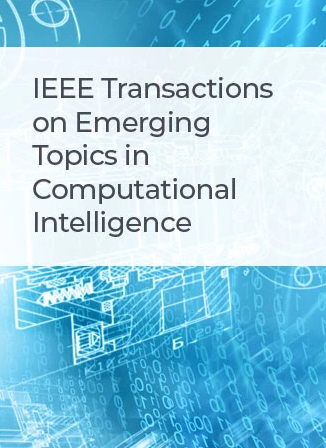DualC: Drug-Drug Interaction Prediction Based on Dual Latent Feature Extractions
IF 5.3
3区 计算机科学
Q1 COMPUTER SCIENCE, ARTIFICIAL INTELLIGENCE
IEEE Transactions on Emerging Topics in Computational Intelligence
Pub Date : 2024-12-02
DOI:10.1109/TETCI.2024.3502414
引用次数: 0
Abstract
Drug-Drug Interaction is characterized by a modification in the action of one drug due to its concurrent use with another. It involves the safety and universality of drugs, and is one of the most meaningful issues in clinical drug combination therapy and drug development. We prefer to use computational methods to achieve DDI prediction in order to achieve large-scale prediction. This article designs a DDI prediction model DualC based on the layer attention mechanism of Graph Convolutional Network and 1 Dimensional-Convolutional Neural Network to extract topological and structural information of drugs. First, the DDI network is obtained from the drug relationship data in the database and the drug similarity network is calculated with the help of drug target features, then they are constructed into a heterogeneous network. Next, the layer attention mechanism and Graph Convolutional Network are used to learn the topological information. Subsequently, the structural information is acquired from the chemical substructure similarity matrix utilizing 1 Dimensional-Convolutional Neural Network. Finally, use the sigmoid function for DDI prediction. The experimental results show advantages of DualC which AUC reaches 0.965 and ACC reaches 0.973. The case study further proves DualC has certain practical significance.基于双重潜在特征提取的药物-药物相互作用预测
药物-药物相互作用的特点是一种药物由于与另一种药物同时使用而改变其作用。它涉及到药物的安全性和普遍性,是临床药物联合治疗和药物开发中最有意义的问题之一。为了实现大规模预测,我们更倾向于使用计算方法来实现DDI预测。本文设计了一种基于图卷积网络和一维卷积神经网络分层注意机制的DDI预测模型DualC,用于提取药物的拓扑和结构信息。首先,从数据库中的药物关系数据中获得DDI网络,并借助药物靶点特征计算药物相似度网络,然后将其构建为异构网络。然后,利用层注意机制和图卷积网络学习拓扑信息。随后,利用一维卷积神经网络从化学子结构相似矩阵中获取结构信息。最后,使用sigmoid函数进行DDI预测。实验结果表明,DualC的AUC可达0.965,ACC可达0.973。案例研究进一步证明了DualC具有一定的现实意义。
本文章由计算机程序翻译,如有差异,请以英文原文为准。
求助全文
约1分钟内获得全文
求助全文
来源期刊

IEEE Transactions on Emerging Topics in Computational Intelligence
Mathematics-Control and Optimization
CiteScore
10.30
自引率
7.50%
发文量
147
期刊介绍:
The IEEE Transactions on Emerging Topics in Computational Intelligence (TETCI) publishes original articles on emerging aspects of computational intelligence, including theory, applications, and surveys.
TETCI is an electronics only publication. TETCI publishes six issues per year.
Authors are encouraged to submit manuscripts in any emerging topic in computational intelligence, especially nature-inspired computing topics not covered by other IEEE Computational Intelligence Society journals. A few such illustrative examples are glial cell networks, computational neuroscience, Brain Computer Interface, ambient intelligence, non-fuzzy computing with words, artificial life, cultural learning, artificial endocrine networks, social reasoning, artificial hormone networks, computational intelligence for the IoT and Smart-X technologies.
 求助内容:
求助内容: 应助结果提醒方式:
应助结果提醒方式:


